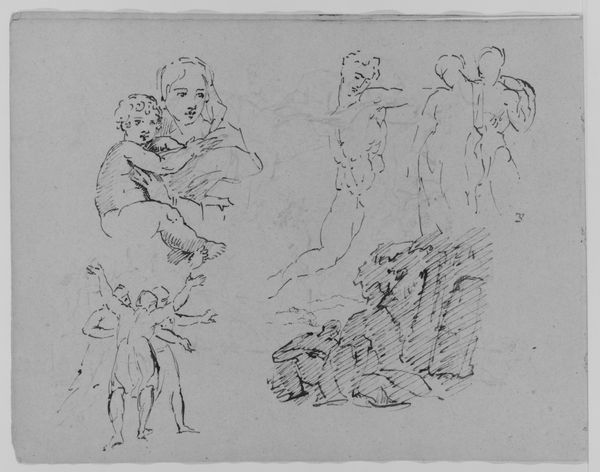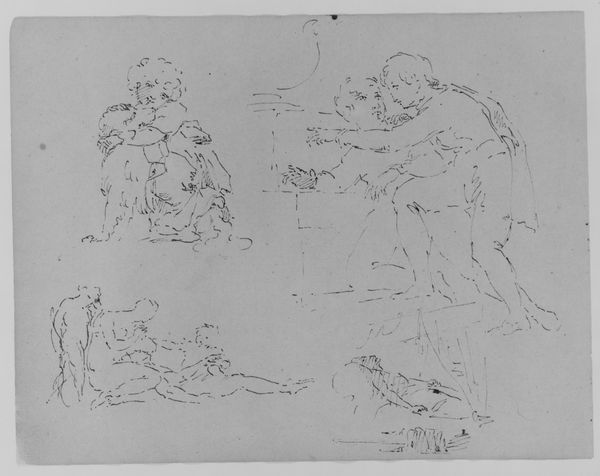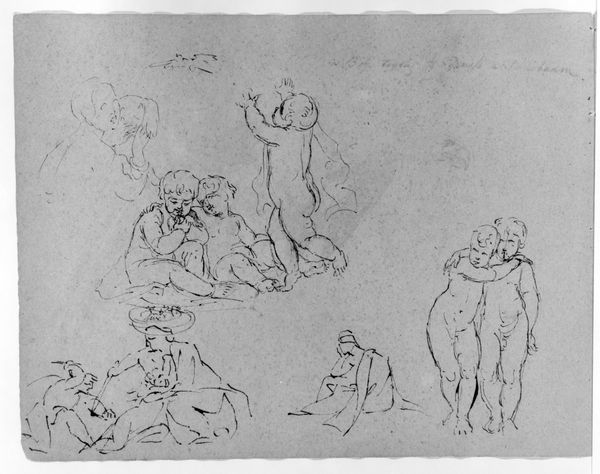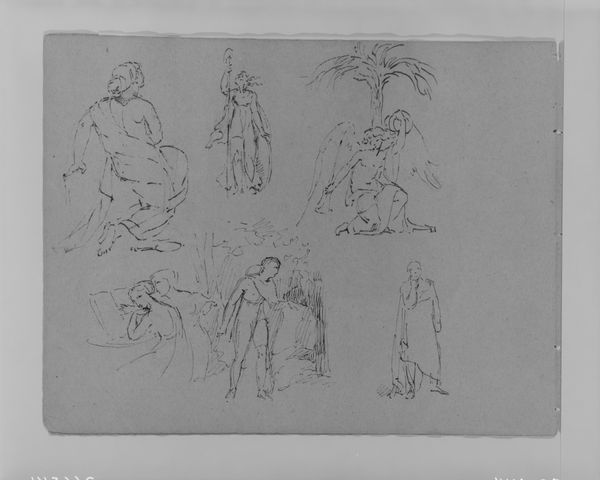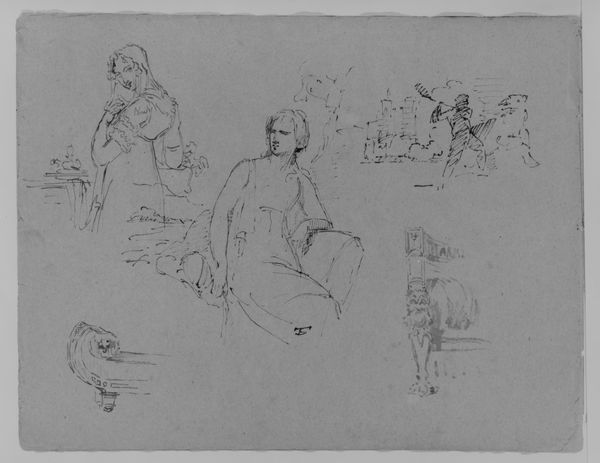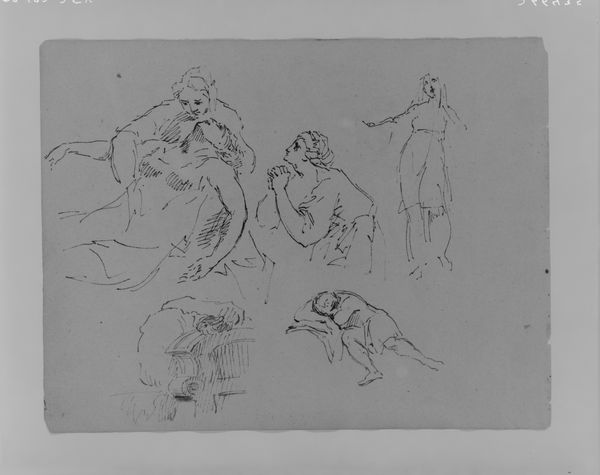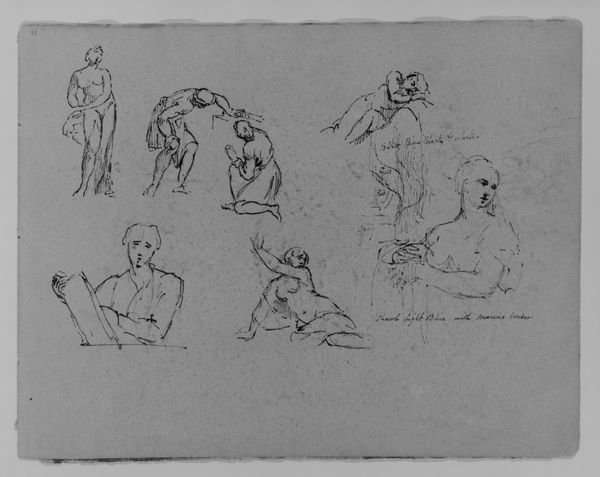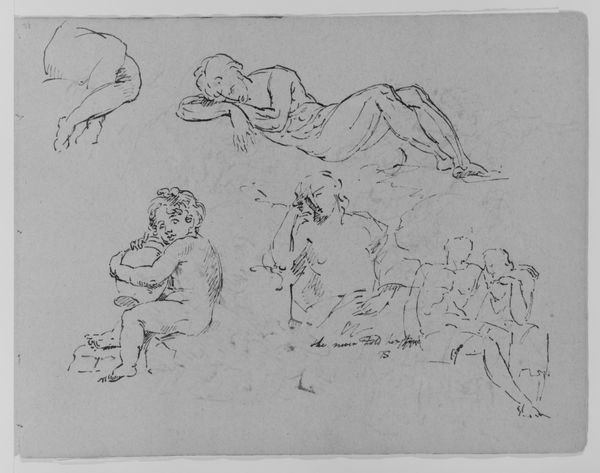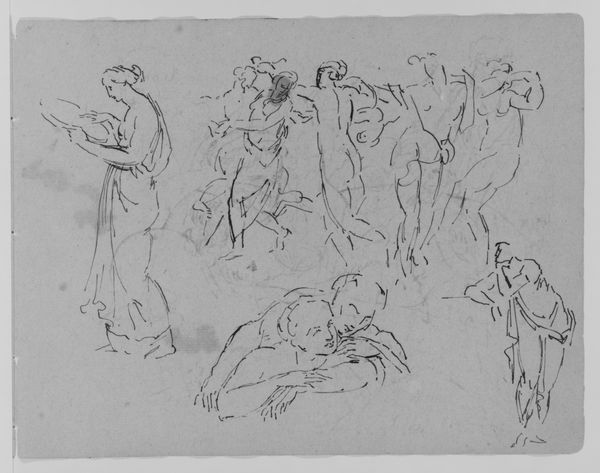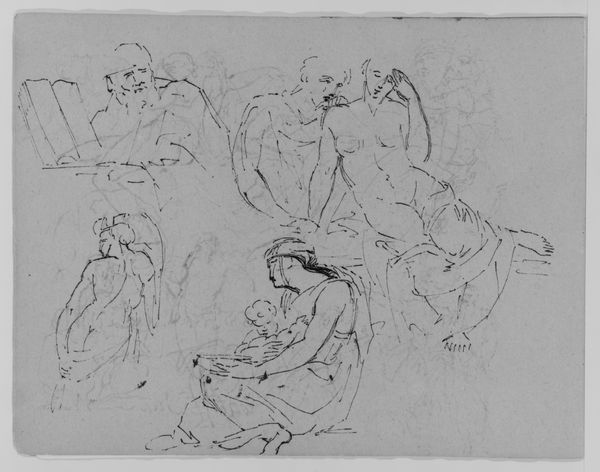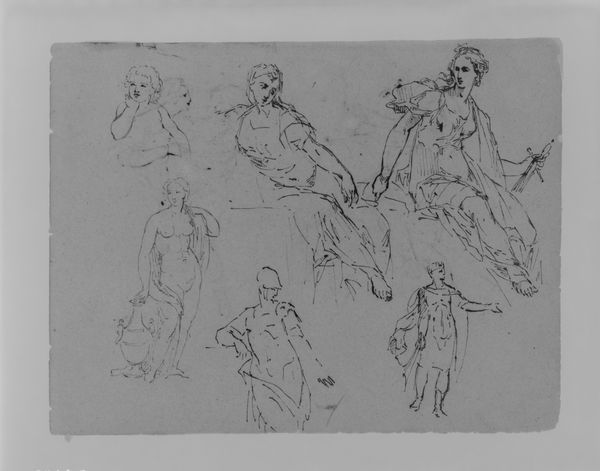
Three Seated Men Conversing; Two Recumbent Children; Back of an Athlete; Seated Male Figure (from Sketchbook) 1810 - 1820
0:00
0:00
drawing, paper, pencil
#
portrait
#
drawing
#
pencil sketch
#
figuration
#
paper
#
child
#
pencil
#
men
#
history-painting
#
academic-art
#
nude
Dimensions: 9 x 11 1/2 in. (22.9 x 29.2 cm)
Copyright: Public Domain
Curator: Sully's pencil sketch, titled "Three Seated Men Conversing; Two Recumbent Children; Back of an Athlete; Seated Male Figure," dating from 1810 to 1820, offers us a glimpse into the artist's process. It's currently held at the Metropolitan Museum of Art. Editor: It feels so preliminary, doesn’t it? A collection of figures, almost like brainstorming forms on paper. I’m struck by the casual intimacy despite the seemingly classical poses, particularly in the contrast between the reclining children and muscular athlete. Curator: Indeed. The contrast speaks volumes. The children evoke associations with cherubic imagery, alluding to innocence, while the athlete references classical ideals of masculine strength, and both find resonance in allegorical art that relies heavily on memory and cultural symbols. Editor: It does raise some questions about idealized bodies and social hierarchies that might be suggested, though, particularly through the power dynamics in the sketched figuration. Like, are these depictions merely academic exercises, or do they reflect then-contemporary views of race and class? Curator: An important perspective. And that context illuminates what Sully and his contemporaries were likely internalizing from Greco-Roman ideals, from beauty standards to hierarchical thinking. But as studies, there is freedom in experimentation here that offers more subtle interpretations as well. Editor: Absolutely. Thinking of power dynamics, it also begs the question: why this particular arrangement, and to what larger image or cultural dialogue might he have been contributing? It's intriguing to imagine the stories he was considering as he moved from figure to figure. Curator: He was absorbing artistic influences that spanned centuries! Perhaps exploring different moods. And the presence of both childhood and adulthood is so often symbolic, as they can refer to various life stages. So, to a historically literate viewer, this kind of composition would spark cultural and even psychological connections. Editor: A kind of theater of life itself. Ultimately, this piece reveals a glimpse of the academic traditions available to artists, but also provides an invitation to consider how deeply ingrained those visual languages might be to contemporary power dynamics, as well. Curator: It certainly offers a great many interpretative paths, leaving us with much to consider regarding beauty and meaning through symbol.
Comments
No comments
Be the first to comment and join the conversation on the ultimate creative platform.
